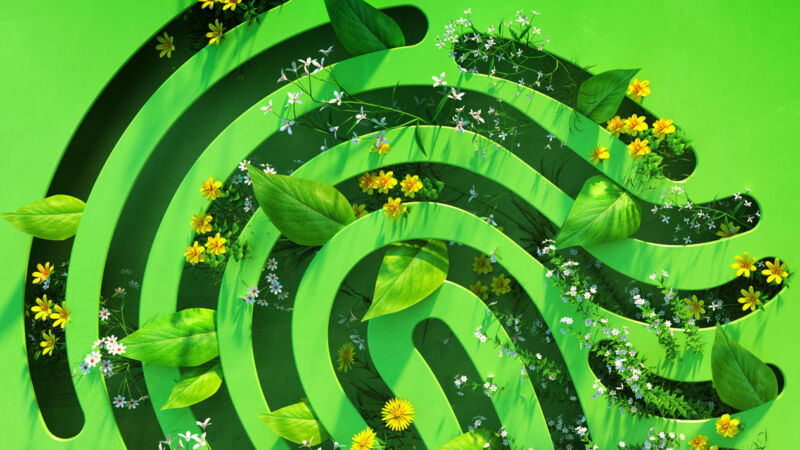
The best gadgets are the ones that find a way to enhance your world of work, play, or even just the daily grind. But there's also another feature that can make a nice piece of tech even better: sustainability.
Continually buying the latest and greatest tech or gadget obviously creates a lot of waste. But thinking critically about the gadgets you buy can play a small part in reversing this trend.
Below, we take a look at some of the unique pieces of tech we've found that either offer a greener approach to rivals or suggest a positive impact on the planet.
A laptop or smartphone for the ages
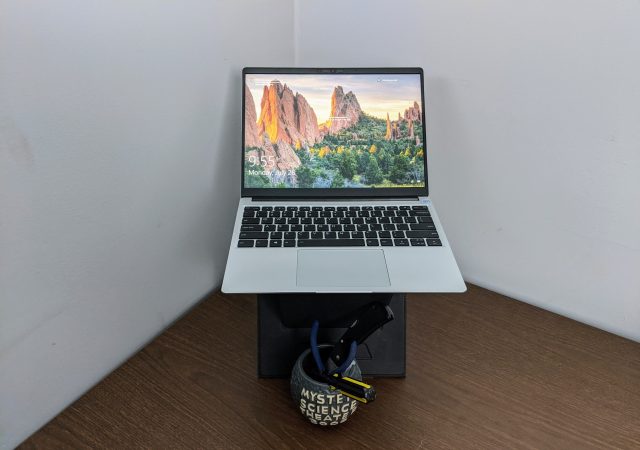
While the Framework Laptop is still working with a last-gen Intel CPU as of this writing, it proved to be a good tool for productivity and even light gaming when we tested it last year. But the relevant thing here is that the laptop was built to last for the long haul. You can upgrade its components, like the RAM and storage, more easily than on other laptops. It's also easier to repair, since it opens up with just a screwdriver, and Framework shares repair guides online. You could even buy the Framework laptop motherboard on its own.
On the phone front, Fairphone can be a more sustainable choice, as it has products that can make it for years and include extended software support. Take the Fairphone 2. It came out in 2010 and can run 2019's Android 10.
Meanwhile, the Fairphone 3 and 3+, which were released in 2019, are beta-testing Android 11.
That all makes the Android 11-based Fairphone 4, which already has a five-year warranty, look pretty promising in terms of longevity.
USB lighter
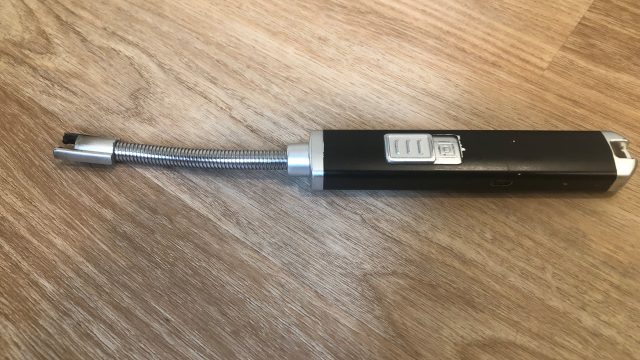
If we're feeling contrite about the wasteful burning of resources, let's turn to our lighters. Disposable lighters are cheap and easy to find in a pinch but aren't recyclable—neither are refillable ones.
Battery-powered options work by using a "high-voltage electrical current [that] passes between two nodes to create an arc of highly charged plasma," per Popular Mechanics. They're rechargeable, so you won't have to keep buying new lighters. And, since they don't use fire, electronic lighters are generally safer and more wind-resistant.
Going deeper, as electronic lighter-maker Power Practical explained in a blog post, "due to ionization, the electrons present in the air start moving along the nucleus and create current in the form of an arc." That's why these chargers are also referred to as plasma or arc lighters. Instead of a dancing flame, you'll see a purple, lightning-like zig zag.
A blog post by an electronic lighter maker cited by Popular Mechanics suggests its products work similarly:
"Lightning occurs when a build-up of electrical charge within clouds reaches the point where the ability of that charge to move through the air is reached and the charged particles jump either between clouds, or down to the ground causing a huge arc of plasma, light, heat, and sound," the Flux Lighters' blog reportedly said.
Rechargeable lighters can be just as pricy or nearly as cheap as traditional ones. A $13 no-name version from Amazon (see the image above) has found its way into my home, and while it sometimes needs some cleaning or bending back and forth to get its arc going, it has been useable since 2019.
There are nicer options, too. For example, The USB Lighter Company has options that last for "up to 1,000 lights per charge" and prismatic flip-top options.
One downside to USB lighters is that you have to keep the arc tips clean, which may require bringing in a tissue or cloth that you'll have to throw out or wash, creating a bit of waste. Most of us need a lighter, and with a USB one, you can still start a fire without burning through a bunch of plastic, metal, and gas, too.
Net-positive monitor arms

Prioritizing sustainability with your monitor arms might sound like a reach at first, but we found offerings from Humanscale that are actually certified to be climate, water, and energy-positive.
Certification comes from the International Living Future Institute, which requires that products be "healthy and free of toxins," "net positive, and benefit both people and the environment." Companies that meet their certification requirements must also be socially responsible, including toward their employees. The certification has seven total performance areas: place, water, energy, health and happiness, materials, equity, and beauty.
Humanscale is the first to sell monitor arms with this certification and has options for single, dual, and tri-monitor setups and beyond.
Something to stand for

In a similar vein, there are standing desks with a green angle.
Humanscale’s adjustable-height Float table claims to be net positive, like the monitor arms above. The company made it with recycled steel and “minimal parts,” plus “no added formaldehyde.”
Flexispot’s Kana standing desk doesn’t make claims as specific as those, but it is made from bamboo, which is generally considered greener than other types of wood. Flexispot claims the bamboo is hand-harvested and that the manufacturing process doesn’t use chemicals. The desk, which comes in different shapes and sizes, uses glue that does not contain aldehyde and a carbonized lacquer coating with 2H hardness to resist degradation.
Perhaps the best part is that Flexispot says it’ll donate enough money to One Tree Planted to plant one tree for every desk purchased.
A (more) eco-friendly printer
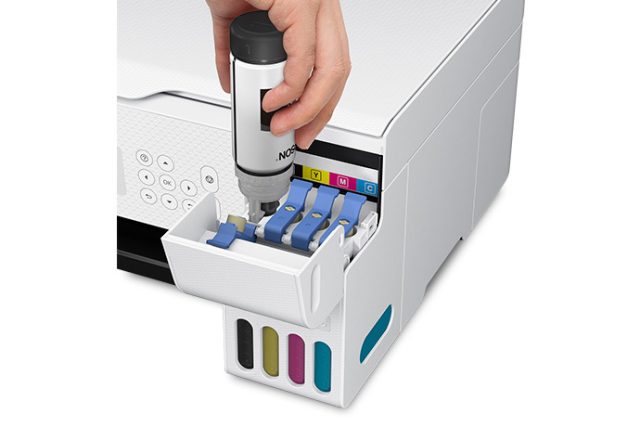
A 2012 study still often cited points to 375 million ink and toner cartridges landing in US landfills per year. Most printers won't do anything to mitigate this issue, but Epson's EcoTank line of printers skips ink cartridges in favor of tanks you refill with recyclable ink bottles.
Each ink bottle is equivalent to about 90 Epson standard-capacity ink cartridges, according to the company, which also claims the ink can last for up to two years if you print about 125 pages per day.
Of course, not printing anything at all would be the greener solution. But for those times when you just need the information in hand, conserving ink-related resources is a good start. Just don't forget to use both sides of the paper.
A candle that mildly heats and dehumidifies
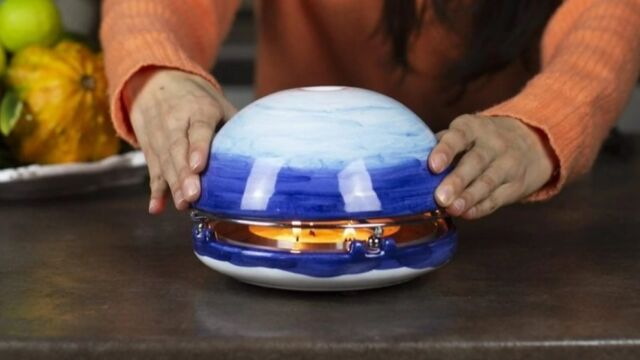
Constantly buying and burning wax and wicks will never feel sustainable, but it just makes a room feel and smell so pretty. If you can't resist the ambiance, you can feel slightly less guilty about literally burning resources if it also means you can lower your thermostat a couple of degrees.
The Egloo's Italian-made, terracotta orb-covered wax and wicks look like they provide a warm glow and pop of color similar to traditional candles. Adding essential oils turns it into an aromatic diffuser, too.
But the real feat is that the Egloo claims it can radiate enough heat to warm a 65.6-square-foot (20-square-meter) room by “at least” two to three degrees. Each Egloo candle takes about five minutes to start heating a room and lasts “about five hours.”
And while Egloo doesn't make specific humidifying claims, its website says it “uses the candle’s power to evaporate the water [you pour into the device] and transform it into wet steam.”
The candles are also reusable, as the company sells refillable packs separately. The decorative orbs are so pretty that you'll want to reuse them, and the refills make it easier to do so than the typical candle.
However, the Egloo could be greener (as it still requires burning through wick and wax). And while you can refill it, the replacements have to be shipped. It also requires water to work, unlike the typical candle. And the company doesn't claim to use any sustainable materials or production techniques.
Still, the Egloo claims to do more than the jar candles around my home that I will burn through and then just toss in a recycling can, never to be enjoyed again.
From food scraps to fertilizer

Beyond reducing food waste by smart shopping and preparing, composting is an excellent way to turn food waste into something useful. However, an aversion to worms and fear of luring the bold critters of New York City to my compost bin have discouraged me from home composting.
Electronic food recyclers don't make true compost, but they offer a less guilt-ridden alternative to throwing eggshells into landfills. This is a growing area, so options are still bulky and pricey, but selection has improved in recent years to the point where you can fit one of the things on a spacious countertop.
One of the most popular by far is the Vitamix FoodCycler FC-50. It takes up one cubic foot (30.5 cubic centimeters) of space and takes old vegetable and fruit scraps, meat and fish bones, eggshells, coffee grounds, cheese, and even pet food, some jams and condiments, and more [PDF list here].
Once activated, it "breaks down food waste into a tenth of its original volume and creates a nutrient-rich fertilizer you can add to your soil," according to Vitamix. The device also uses a "carbon filtration system" to reduce odors.
Meanwhile, the Pela Lomi claims to turn food scraps into "nutrient-rich soil that can be applied directly to garden beds, or added to house plants," and you can also put bioplastics into it—although, it's harder to find right now to purchase it.
Ars Technica may earn compensation for sales from links on this post through affiliate programs.
"gadget" - Google News
April 29, 2022 at 01:51AM
https://ift.tt/7Xk3H6a
Want to reduce waste? These are some unique semi-green gadgets - Ars Technica
"gadget" - Google News
https://ift.tt/xkamM6f
Bagikan Berita Ini














0 Response to "Want to reduce waste? These are some unique semi-green gadgets - Ars Technica"
Post a Comment